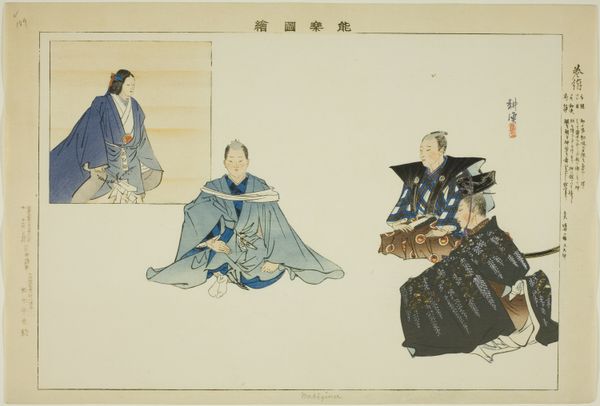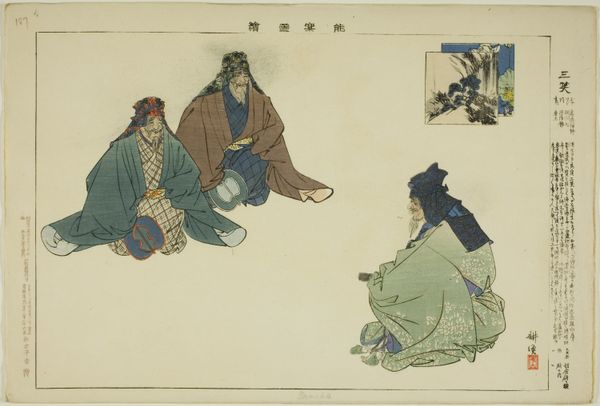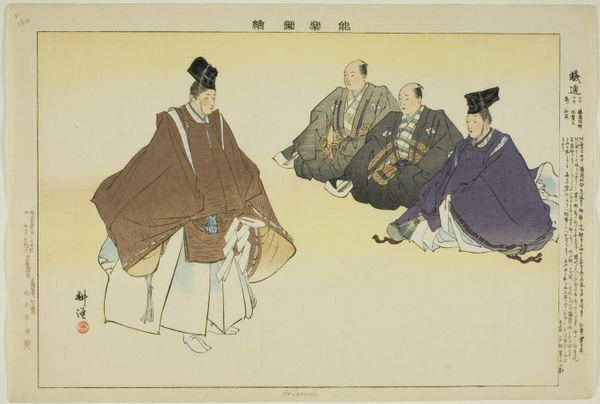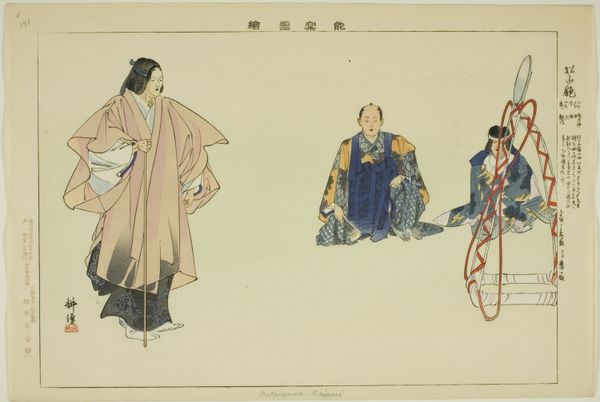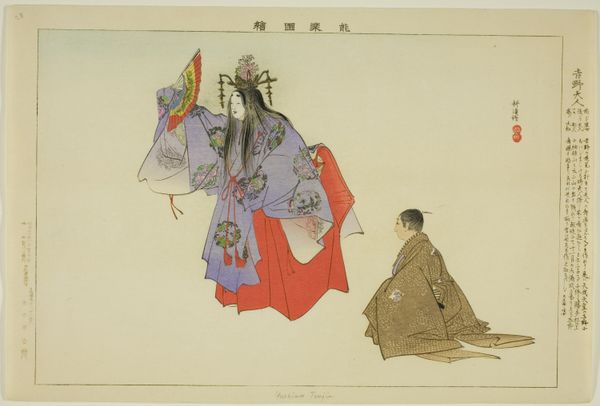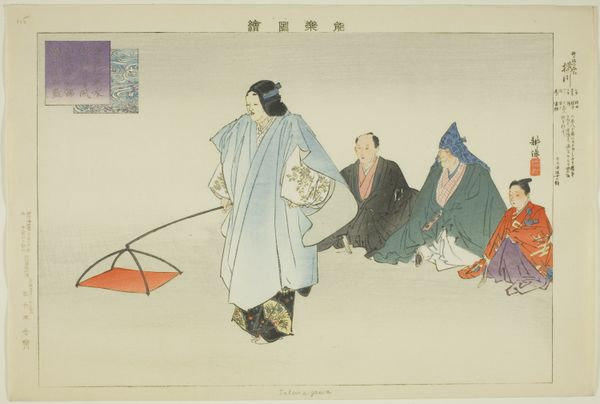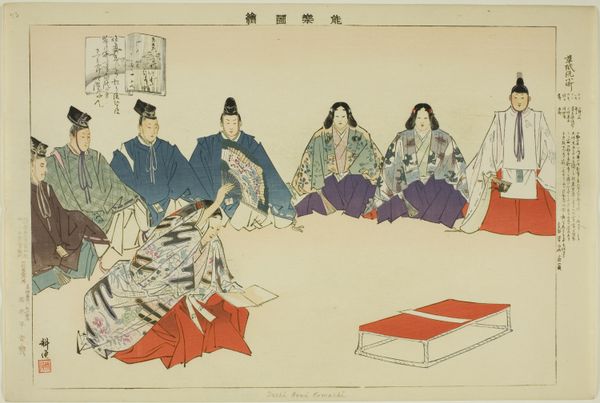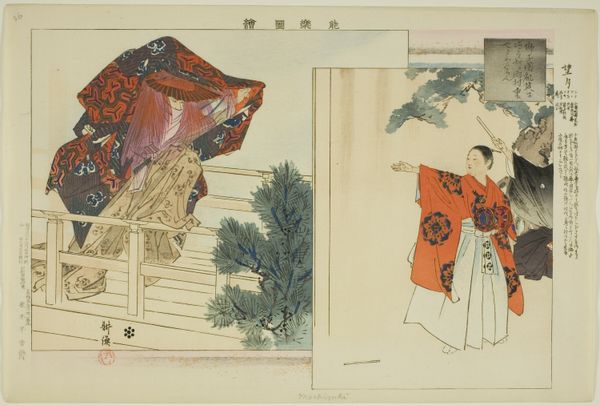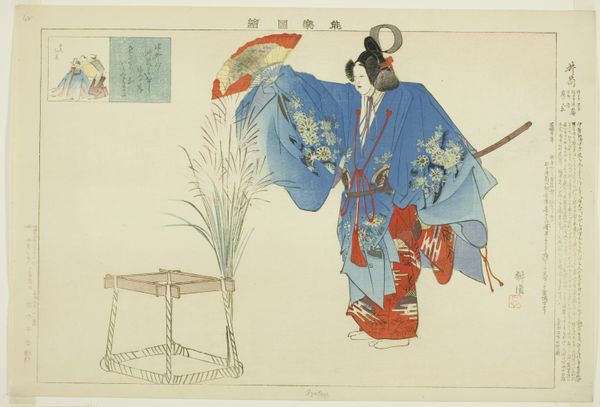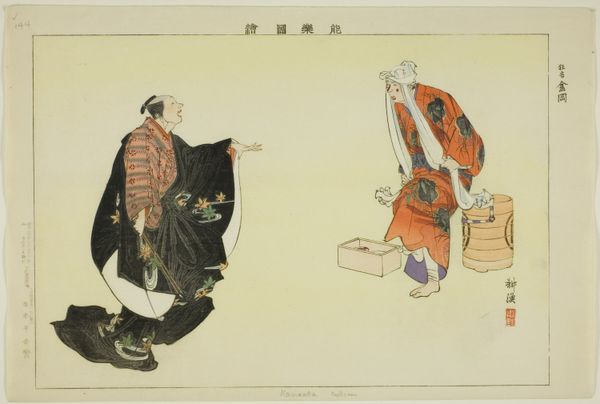
Uta-ura, from the series "Pictures of No Performances (Nogaku Zue)" 1898
0:00
0:00
Dimensions: Approx. 25.2 × 37.4 cm (10 × 14 4/3 in.)
Copyright: Public Domain
Editor: Here we have Tsukioka Kôgyo's woodblock print, "Uta-ura, from the series 'Pictures of No Performances (Nogaku Zue)'," created in 1898. There’s something very striking about the composition, how the figures almost seem suspended on the page. What do you see as being culturally significant about this work? Curator: Well, considering this piece through a historical lens, we see Japonisme in full bloom. These prints were circulating widely in Europe and North America, influencing Western art's understanding of Japanese culture. Kôgyo presents No theatre, but consider the public he's addressing: is it strictly a domestic audience or also one eager for exotic glimpses? The floating quality contributes to this effect of aestheticized distance. Editor: That makes me think about the staging of No theatre. Were prints like these also shaping the *performance* of the plays, influencing costume and set design in any way? Curator: A fascinating question. It's likely a reciprocal relationship. Prints preserved and popularized aspects of No theatre while simultaneously feeding back into its presentation. What message is Kôgyo sending by framing the scene like this? Does the artist use No to reinforce an idea of Japanese cultural identity during this time? Editor: I hadn't thought about that aspect of cultural preservation. I was mainly stuck on the aesthetic, but you’re right, it makes me consider what Kôgyo was actively *doing* with the representation. Curator: Precisely. We should never consider an artwork in isolation. How did the socio-political forces shape artistic output in the period, and what role did these works play for a Japanese and global audience? Food for thought.
Comments
No comments
Be the first to comment and join the conversation on the ultimate creative platform.
